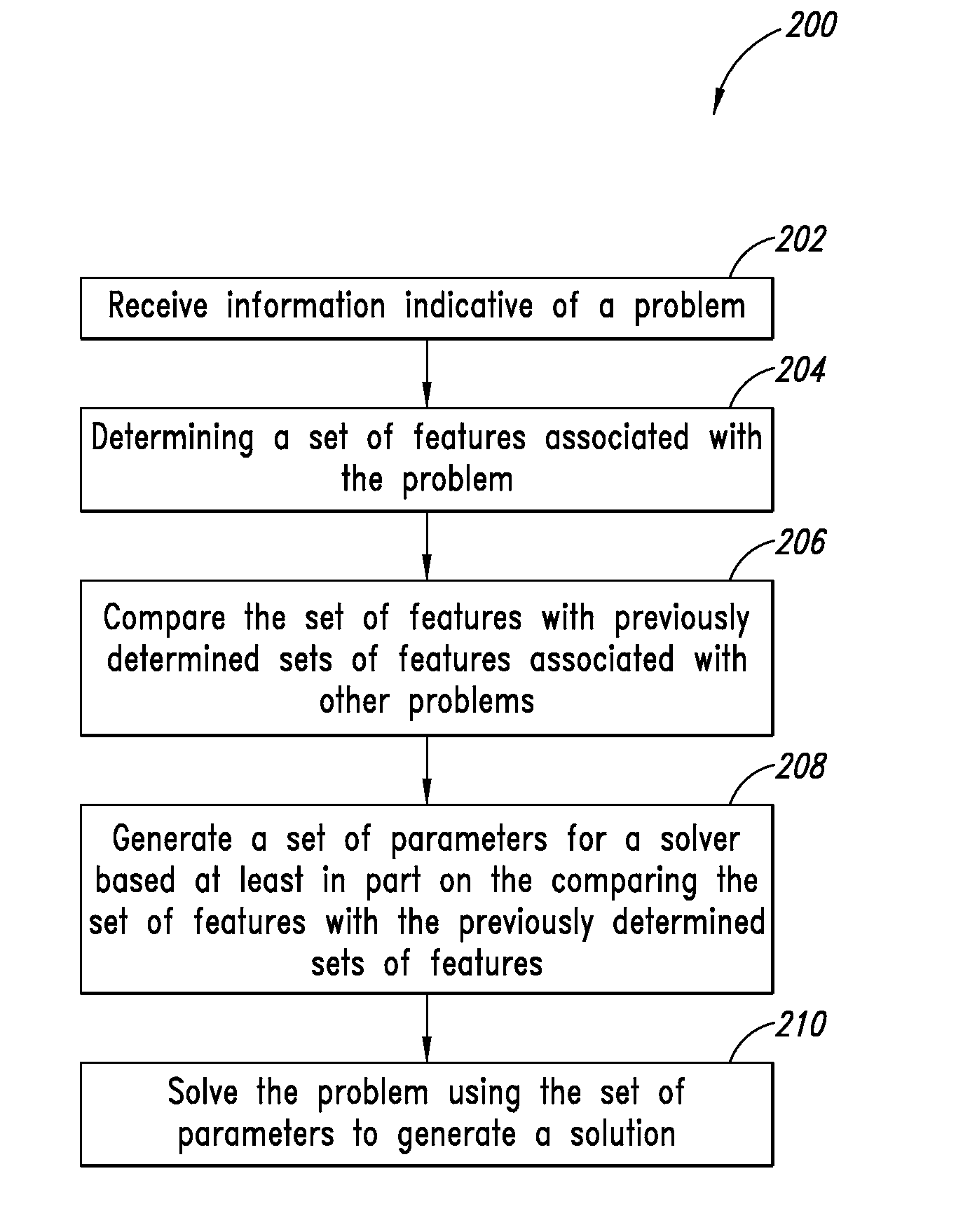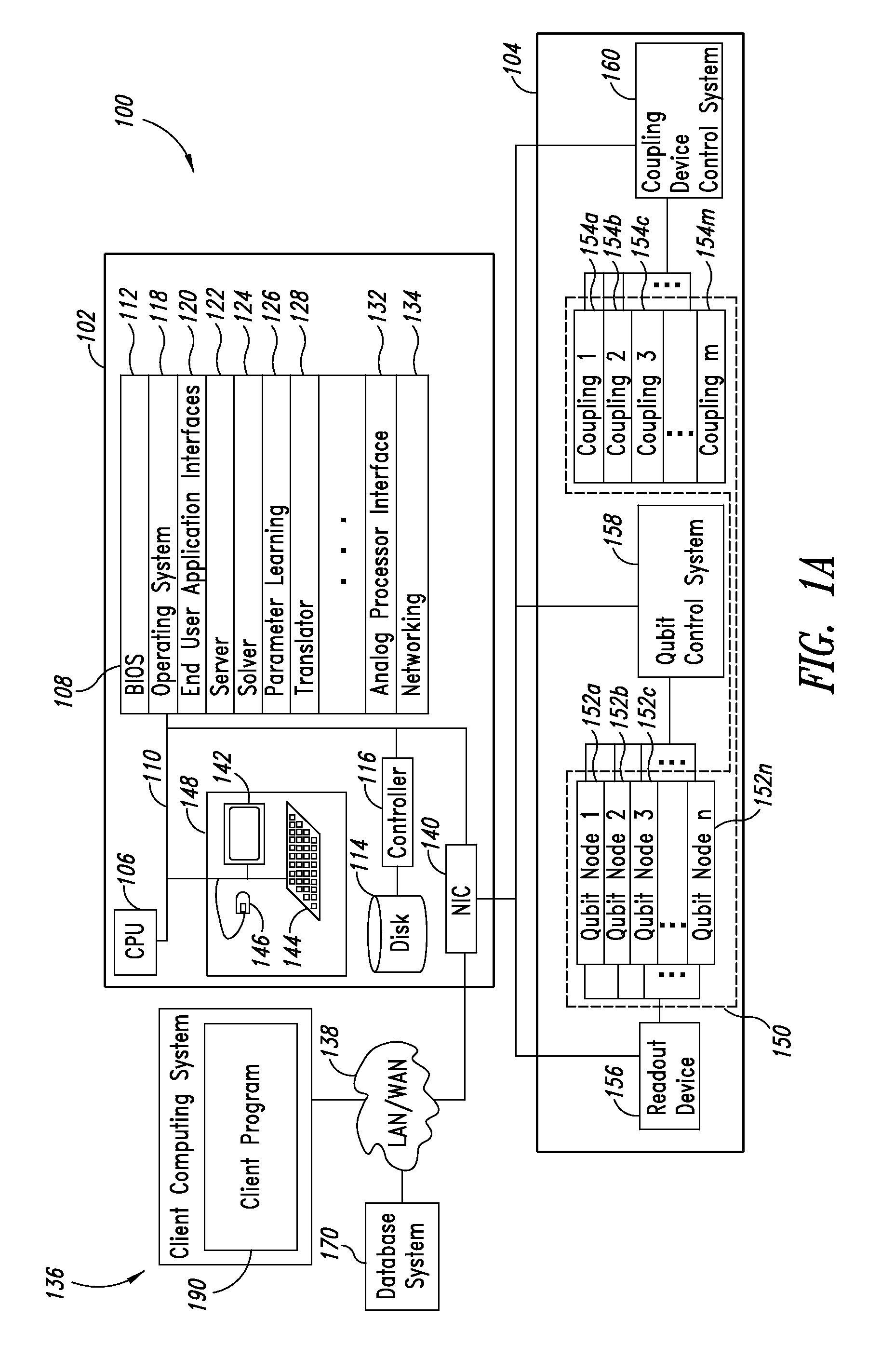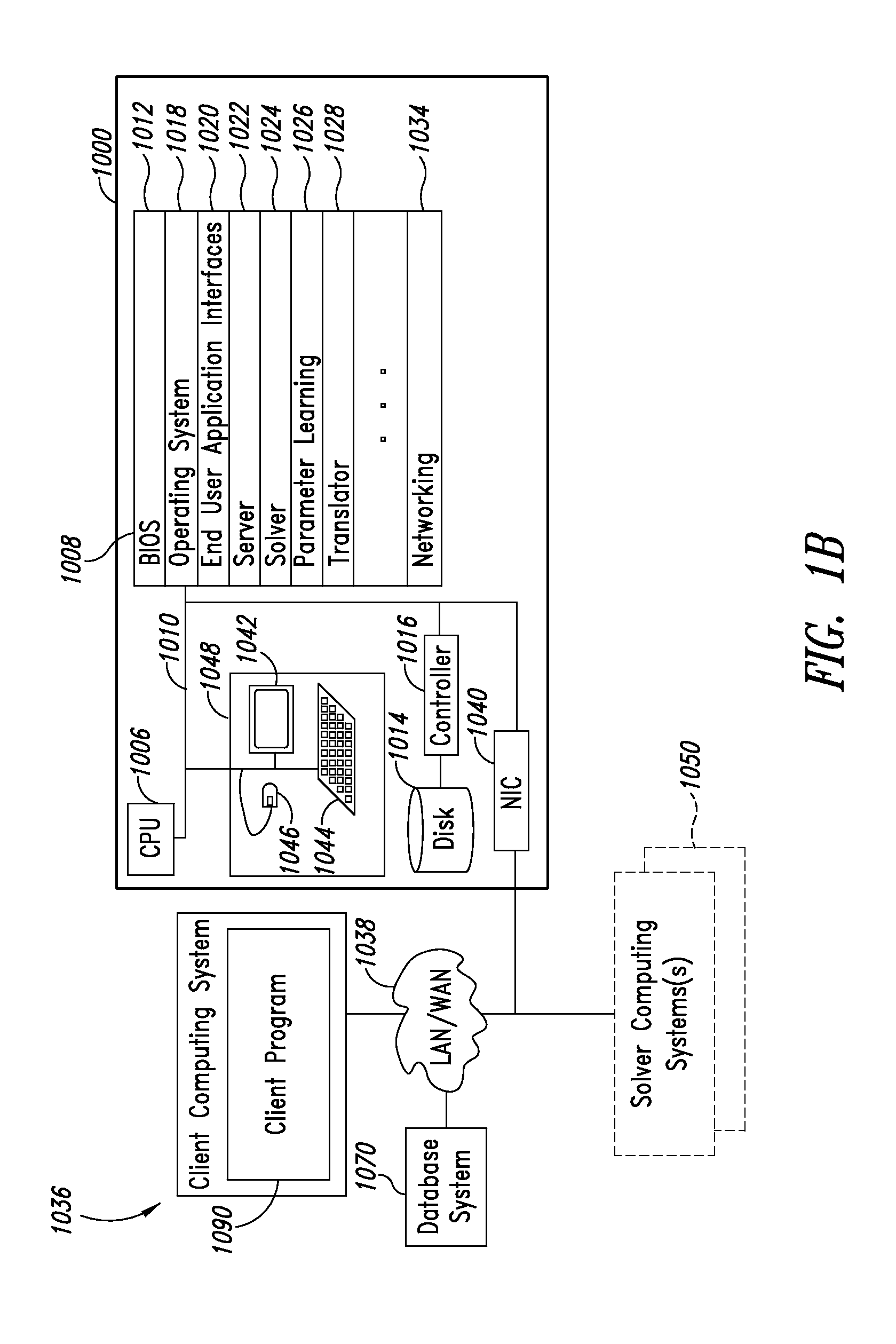Quantum and digital processor hybrid systems and methods to solve problems
a quantum and digital processor technology, applied in the field of solvers, can solve problems such as inability to find the optimal solution in polynomial time, invalidate the church-turing thesis, and not yet known if algorithms
- Summary
- Abstract
- Description
- Claims
- Application Information
AI Technical Summary
Benefits of technology
Problems solved by technology
Method used
Image
Examples
Embodiment Construction
[0057]In the following description, certain specific details are set forth in order to provide a thorough understanding of various disclosed embodiments. However, one skilled in the art will understand that the present systems, methods and articles may be practiced without these details, or with other methods, components, computing systems, etc. In other instances, well-known structures and methods associated with classical, analog and quantum computers, computationally complex problems, and heuristic solvers have not been shown or described in detail to avoid unnecessarily obscuring descriptions of the embodiments of the present systems, methods and articles.
[0058]In addition, various heuristic solvers are described herein with reference to certain exemplary complex problems. Of course, heuristic and other types of solvers may be used to generate solutions for a variety of problems, such as optimization problems (e.g., logistics, planning, network utilization, etc.), as well as con...
PUM
 Login to View More
Login to View More Abstract
Description
Claims
Application Information
 Login to View More
Login to View More - R&D
- Intellectual Property
- Life Sciences
- Materials
- Tech Scout
- Unparalleled Data Quality
- Higher Quality Content
- 60% Fewer Hallucinations
Browse by: Latest US Patents, China's latest patents, Technical Efficacy Thesaurus, Application Domain, Technology Topic, Popular Technical Reports.
© 2025 PatSnap. All rights reserved.Legal|Privacy policy|Modern Slavery Act Transparency Statement|Sitemap|About US| Contact US: help@patsnap.com



